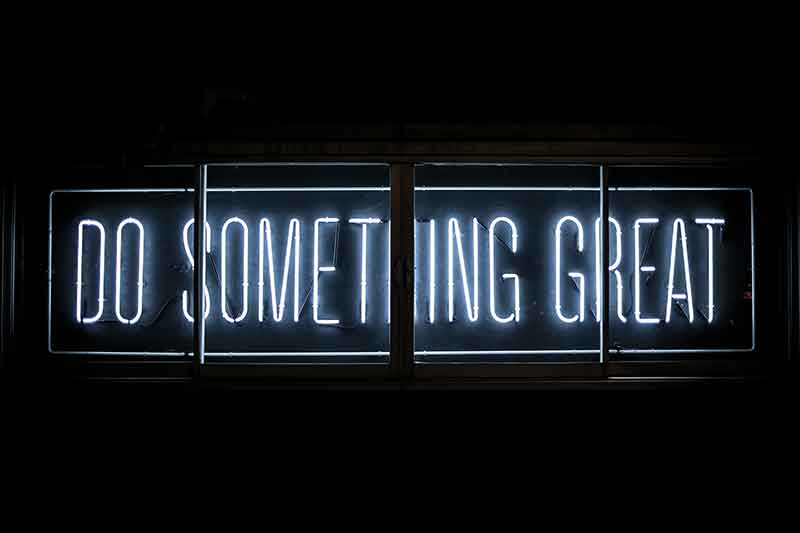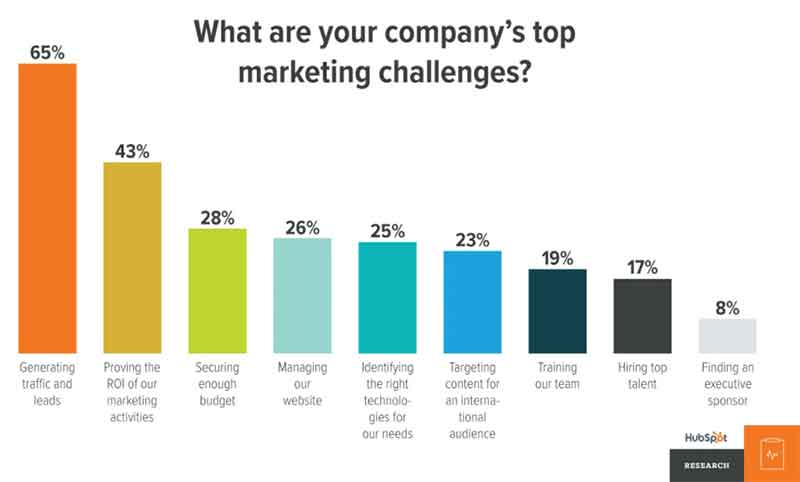A sales funnel is a vital part of any digital marketing strategy. But the general concept is nothing new. On a basic level, it’s the process of getting your consumers to take action along the buyer’s journey.
What has changed is the complexity of the funnel as marketers refine the methods they use to drive more conversions. An optimized funnel built for conversions can be a game-changer for your business, no matter your industry or sales environment.
You can reach out to new prospects who have never heard of your products and transform them into happy customers. What’s more, perfecting your sales funnel gives you a firmer grasp of how your marketing strategy is working.
Let’s dive into the steps for building a sales funnel for your business.
What is a sales funnel?
Your sales funnel is an intentional path that helps you acquire new leads and guide prospects from one step of the funnel to the next.
Just as importantly, it enables you to follow their path along the customer journey.
The sales funnel encompasses all of your customer’s favorite channels, from search engines through paid advertising to your content and email marketing.
You target leads in a multi-step process that validates their problems, speaks to their ideal outcomes, and offers solutions.
Imagine you’re selling a product or service. At first, you might want a customer to sign up for a newsletter, click on an ad, or read a post. Next, you might get them to sign up for a “lead magnet” delivered in an email.
Having “warmed up” your prospect, happily, you inspire the desired outcome. Of course, your work doesn’t end with your client ready to purchase.
For example, if you’ve asked prospects to call to make their order or book an appointment, you can use systems such as customizable phone tree templates to direct callers to the person most able to help them.
Always make things easy for your prospects.
Why do businesses need a sales funnel?
Creating a sales funnel helps you predict how your sales process unfolds and decipher how each stage affects customers. Otherwise, you’re just guessing. Once you create your funnel, you can pick up new leads and drive customers to a sale on autopilot.
Your sales funnel lets you see the path your prospects take to conversion and identify the places where they drop out, aka the holes in your funnel. Use lead generation tools to supercharge it. Before you eye up a conversion rate optimisation service, you need to figure out what your sales funnel looks like.
Then you can optimize each stage to deliver the right message at the right time. The biggest challenge to implementing a sales funnel is when communication breaks down between marketing and sales teams.

Both teams need to work in harmony since any mistakes made during a campaign can cascade across your entire funnel.
Fortunately, conferencing call services can help disparate departments stay on the same page. These tools not only come with a standard dial-in number, but they also boast screen-sharing and other collaborative features.
The sales funnel: three stages
The three stages of the sales funnel are acquisition, activation, and conversion.
Let’s take a look at each stage.
Acquisition
At the top of the funnel, you aim to capture the attention of your ideal customers to acquire new leads. Whether it’s a social media post or from a Google search, this stage is your chance to introduce yourself to your prospect and communicate upfront what you have to offer.
It’s not about selling at this stage but establishing trust. If you’re pushing products or services from the start, you’re faceplanting. The goal of the acquisition stage is to nurture and educate prospects on your business.
A lead magnet is like a teaser you offer free of charge in exchange for gaining personal information that you can then use to woo your prospect in future ventures – a coupon or newsletter signup, for example.
In return, you get more traffic and engagement on your site. While you’re building a connection, you should also implement a relationship funnel for business growth.
Activation
In the middle stage of the funnel, you’ve piqued your prospect’s curiosity, and they’ve expressed an interest in your business. It’s time to attract them with crazy-good content that focuses on a challenge they face and offers help.

That lets you establish your expertise and helps them make an informed decision.
Again, you can invest in your lead by offering an introductory offer. For example, an app testing solutions company might offer a mobile app testing tutorial to an ecommerce business looking to check if its app sends a confirmation once a customer has made a purchase.
Note that this offer should follow logically from the original lead magnet and be related to your core product. Seek some minimal low-risk commitment from your consumer that gets the ball rolling.
Conversion
At the bottom of the funnel is where customers act and where you close sales. After you’ve sweetened the deal with, say, a time-limited offer that creates urgency, you attempt to convert your ideal customers with your core offer.
Email, paid advertising, and retargeting prospects are your chief conduits to deliver it. Quite simply, getting a customer through the funnel means you’ll close out more deals. How many, though, hinges on the strength of your product and how well you nail customer retention.
Your follow-up can be just as critical as swooping in with a can’t-miss offer. Show gratitude, invite feedback, and provide further support, with one eye on customer lifetime value (LTV).
Fun fact: brands that ace their customer-centric organizational culture boost their conversion metrics and win more customers.
Repeat the process by adding customers to a new email list with different content to upsell. When prospects contact you, gather insights from your contact center analytics to create detailed customer profiles that capture their preferences, queries, and past products they bought.
Leverage these nuggets in your follow-up and renewal efforts. Stay in contact with leads who did not purchase who might become customers down the road.

Creating a sales funnel
Understand your audience
How do you fill your sales funnel with people genuinely interested in what you sell?
Analyze your audience’s behavior and use the data points to hone your buyer personas. Use tools to build a profitable sales funnel. Dig into specific leads to determine if they’re a good fit for your business. Research their needs, pain points, and other factors that will affect their decision.
A generic sales approach attracts no one.
Define your goals and strategy
Which channel will you target to generate leads? What low-cost, low-risk intro offer will you deploy as a hook? How will you promote it? What will your core offer be? Namely, the product or service that you want to sell. With clearly defined goals you can then move on to the next stage.
Capture attention with flawless content
Your marketing team will attract potential customers into your sales funnel with juicy campaigns. You could choose the organic route – sharing plenty of personality-filled offers across all of your platforms. Or, if you have the budget, you can run ads on the platforms your ideal customers use. For example, creating funnels on LinkedIn is a natural option for B2B.
Create a landing page
Your landing page is where you ideally want to steer your prospects. Include a unique selling point, social proof, and a bold call to action (CTA) that encourages visitors to take the specified action.
Leverage an email drip campaign
Once you build a relationship with your prospect, provide more valuable content that educates and overcomes hurdles. Try not to exceed more than an email or two per week – to build up to your sale.
Follow up to stand out
Stay in regular contact with existing customers with additional deals or discounts. Follow up with leads who aren’t ready to become customers just yet to maintain engagement.
 Measure your success
Measure your success
Okay, you know how your sales funnel should look in theory.
In practice, however, you need to optimize your process to stay ahead of the curve. Remember to track your conversion rates at each stage of the sales funnel to identify the tweaks you need to make.
Is your content cutting through and grabbing attention? Are prospects happy to part with their personal information? Has your email blitz converted leads to paying customers?
An optimized sales funnel enables you to market more efficiently to consumers who are spoilt for choice. The more insight you have about how consumers interact with your campaign, the better your sales funnel will be and the more prospects you’ll potentially convert.
There are multiple ways to find out what’s working and what’s not. A/B testing your landing page is a must. Mix up the elements of your site to see what resonates. It takes time, but even subtle adjustments can impact conversions.
Over to you
A top-notch sales funnel can be hard to build and complex to perfect, sure, but it is achievable with the right tools and approach.
Once you’ve locked in a sales funnel that’s best for you and your customers, it’ll be a key part of scaling your business when you start to grow. Follow this guide to create a funnel that attracts more of the right prospects and converts them into paying and repeat customers. Shoot for success.
About the Author
 Jenna Bunnell is the Senior Manager for Content Marketing at Dialpad, an AI-incorporated cloud-hosted unified communications and VoIP system that provides valuable call details for business owners and sales representatives. She is driven and passionate about communicating a brand’s design sensibility and visualizing how content can be presented in creative and comprehensive ways. Here is her LinkedIn.
Jenna Bunnell is the Senior Manager for Content Marketing at Dialpad, an AI-incorporated cloud-hosted unified communications and VoIP system that provides valuable call details for business owners and sales representatives. She is driven and passionate about communicating a brand’s design sensibility and visualizing how content can be presented in creative and comprehensive ways. Here is her LinkedIn.


































